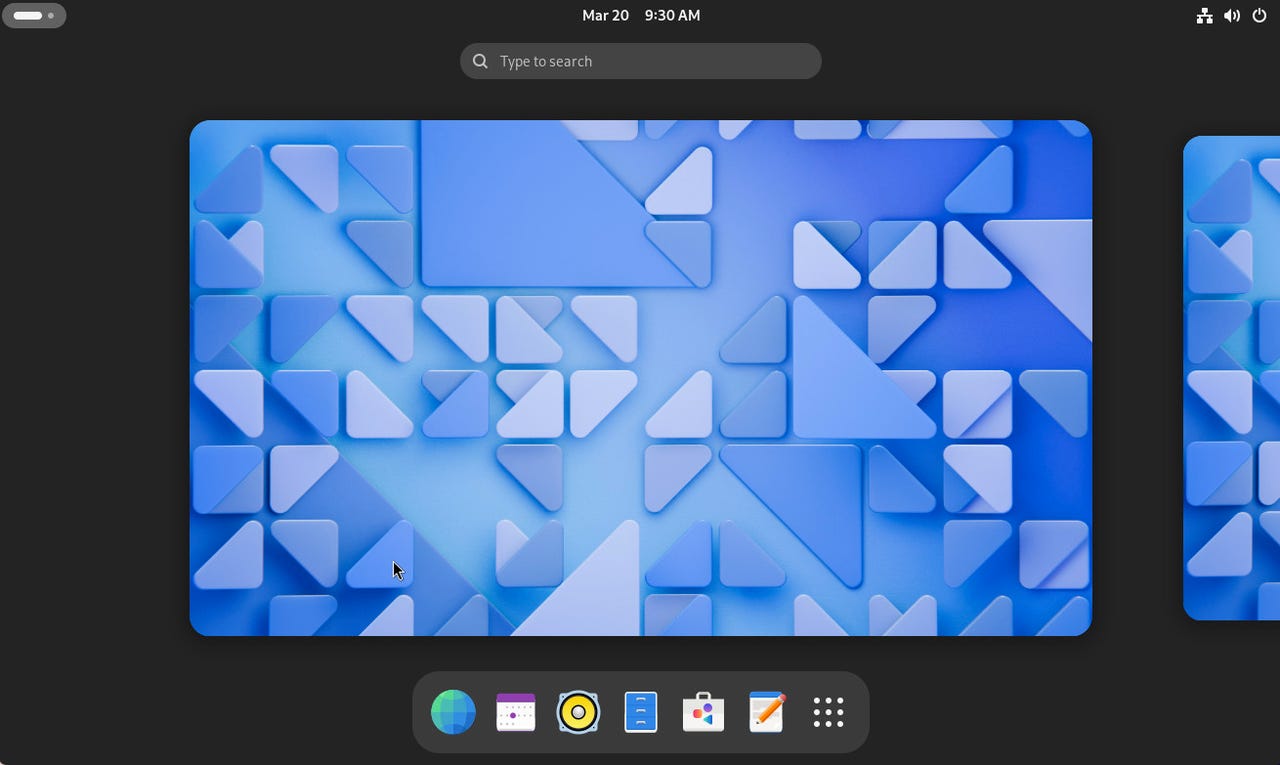
The GNOME default desktop.
Screenshot by Jack Wallen/ZDNET
GNOME is one of many Linux desktop environments and has been accepted as the default for some distributions. GNOME is a minimal take on the desktop that offers maximum efficiency. Although it might look a bit different to others, it serves the same purpose and can be customized to suit how you work.
Also: The top 5 GNOME extensions I install first (and what they can do for you)
Soon, a new version of GNOME will be released (v47) and although it doesn’t offer any game-changing features, the desktop does add enough improvements to make it a worthy upgrade.
Here are the six features that will have a lasting impact on your experience.
1. Custom accent colors
For some, GNOME isn’t the most beautiful desktop on the market. I enjoy the aesthetic because I tend to lean toward minimalism. With the next release, the developers have finally added custom accent colors. This feature has been one of the more anticipated additions for a while.
Also: 5 quick tweaks make your GNOME desktop so much easier to use
Although custom accent colors won’t make GNOME more efficient or effective, they will make the desktop more pleasing to the eye. When you change the accent color, elements like borders, buttons, dropdowns, and other features will adopt the new highlight. It’s a subtle addition, but it makes a big difference to the look of the GNOME desktop.
2. Hardware encoding for screencasts
This is a significant improvement for video playback for both Intel and AMD hardware. GNOME 47 leverages Video Acceleration API (VA-API) and the vapostproc library and can now offload color conversion to hardware.
This feature means video playback will be considerably smoother and will reduce the load placed on the CPU.
Also: How to change DNS servers on a GNOME-based Linux distribution (and why you should)
Another addition is the use of Direct Memory Access Buffer (DMAbuf) with the explicit modifier API, which results in much-improved memory management/data transfer between the CPU and GPU.
3. A new build option for Wayland
Compiling GNOME used to require X11 to build. As for X11’s replacement, Wayland, you couldn’t build GNOME with it. That situation changes when 47 releases, by way of a new build option that enables compiling Mutter (the GNOME compositor) without depending on either X11 or Wayland. The options used for this are -Dx11=false -Dxwayland=true -Dwayland=true.
4. Better performance
GNOME 47 does a much better job of handling asynchronous processes and jobs. To achieve this boost, the gnome-initial-setup-copy-worker job launches the first time a user logs in and copies a set of files to the home directory. Thanks to this change, GNOME no longer depends on the slower GNOME Virtual Fiel System or GNOME’s abstraction layer, which should bring about a significant performance increase.
5. Improved default applications
Several of the default GNOME applications have received improvements. At the top of that list is GNOME Calendar’s new support of ICS file importing via drag and drop. Files also receives some love with a brand new file chooser, a redesigned sidebar, and more flexible bookmarks. The Epiphany web browser now includes features such as autofill, a bookmarks search bar, a privacy reporting feature, importing passwords from a CSV file, and setting an image as wallpaper.
6. Network connection management
The Network View is revamped, with a new Network tab introduced in the Files sidebar. This new option displays connected devices, previous devices, and available network devices, so users will have an easier time managing network connections.
Also: How to choose the right Linux desktop distribution for you
There are plenty of smaller updates, plus the usual slew of bug fixes and security patches. You can read more about the upcoming GNOME 47 release in the official updated modules and changes document.
At the moment, GNOME 47 is in beta but will reach stable release candidacy on 14 September, so the official release should be coming soon. When the next iteration is released, you’ll be able to read more about it on the official GNOME Release page or the GNOME Discourse site.
Open Source




















